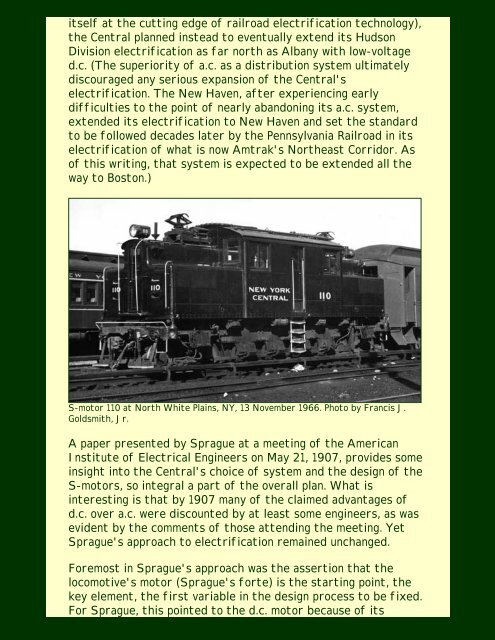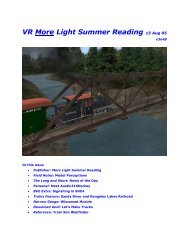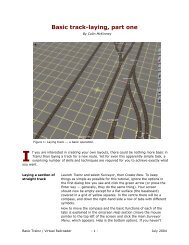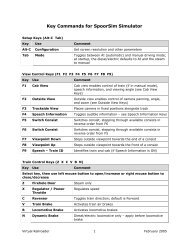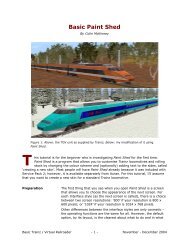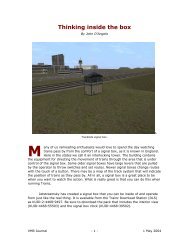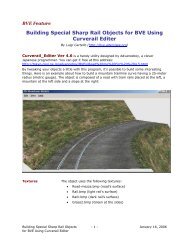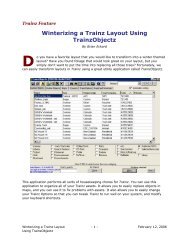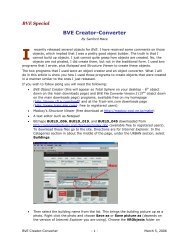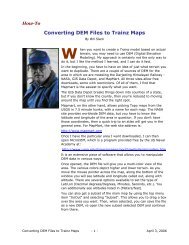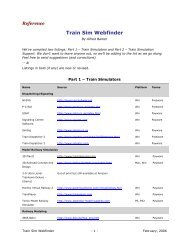Old Maude, Preface - Virtual Railroader
Old Maude, Preface - Virtual Railroader
Old Maude, Preface - Virtual Railroader
Create successful ePaper yourself
Turn your PDF publications into a flip-book with our unique Google optimized e-Paper software.
itself at the cutting edge of railroad electrification technology),<br />
the Central planned instead to eventually extend its Hudson<br />
Division electrification as far north as Albany with low-voltage<br />
d.c. (The superiority of a.c. as a distribution system ultimately<br />
discouraged any serious expansion of the Central's<br />
electrification. The New Haven, after experiencing early<br />
difficulties to the point of nearly abandoning its a.c. system,<br />
extended its electrification to New Haven and set the standard<br />
to be followed decades later by the Pennsylvania Railroad in its<br />
electrification of what is now Amtrak's Northeast Corridor. As<br />
of this writing, that system is expected to be extended all the<br />
way to Boston.)<br />
S-motor 110 at North White Plains, NY, 13 November 1966. Photo by Francis J.<br />
Goldsmith, Jr.<br />
A paper presented by Sprague at a meeting of the American<br />
Institute of Electrical Engineers on May 21, 1907, provides some<br />
insight into the Central's choice of system and the design of the<br />
S-motors, so integral a part of the overall plan. What is<br />
interesting is that by 1907 many of the claimed advantages of<br />
d.c. over a.c. were discounted by at least some engineers, as was<br />
evident by the comments of those attending the meeting. Yet<br />
Sprague's approach to electrification remained unchanged.<br />
Foremost in Sprague's approach was the assertion that the<br />
locomotive's motor (Sprague's forte) is the starting point, the<br />
key element, the first variable in the design process to be fixed.<br />
For Sprague, this pointed to the d.c. motor because of its


